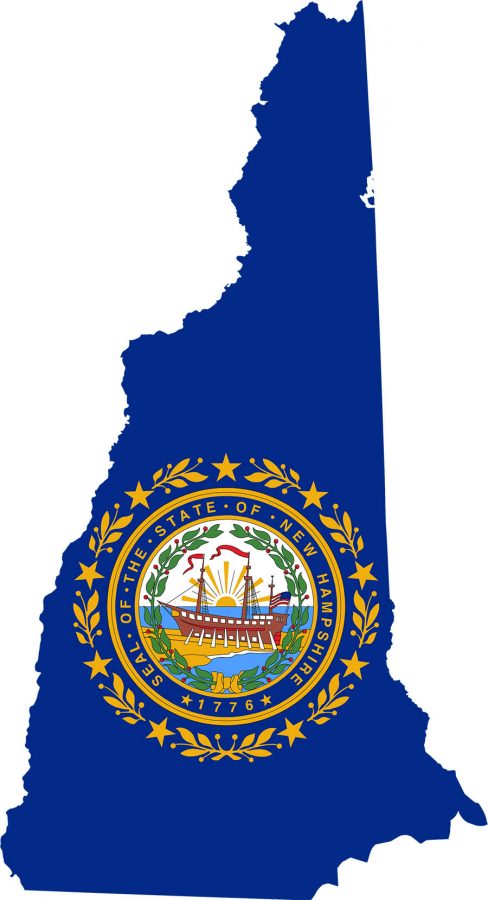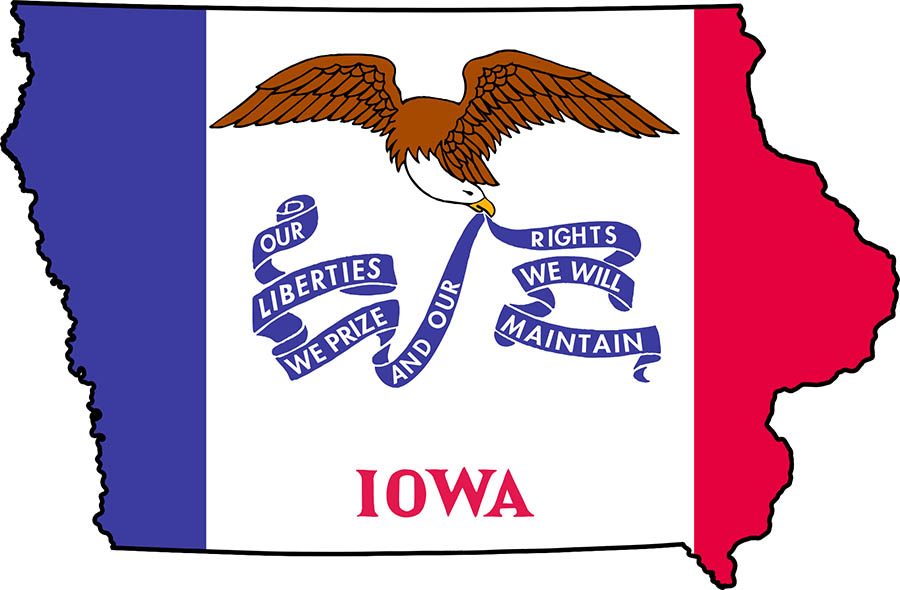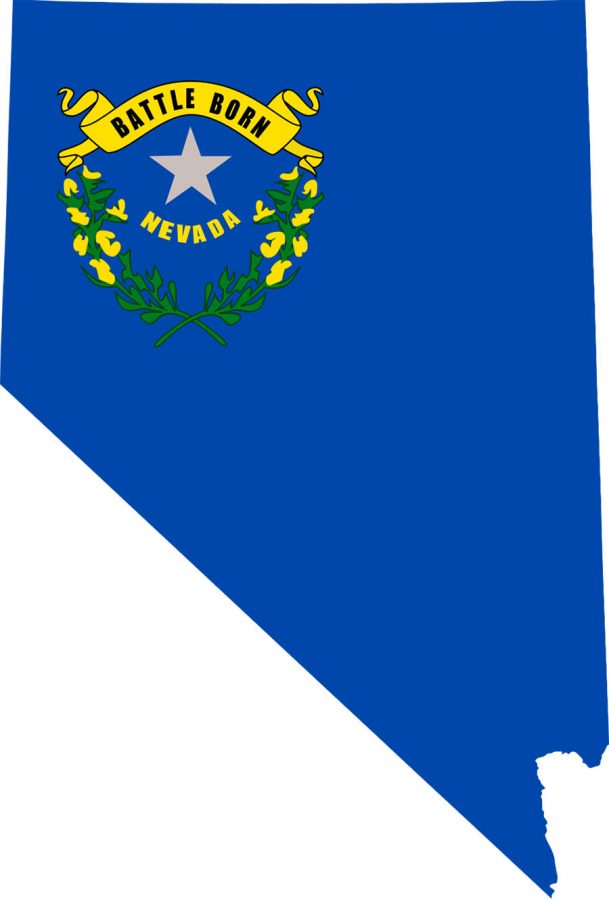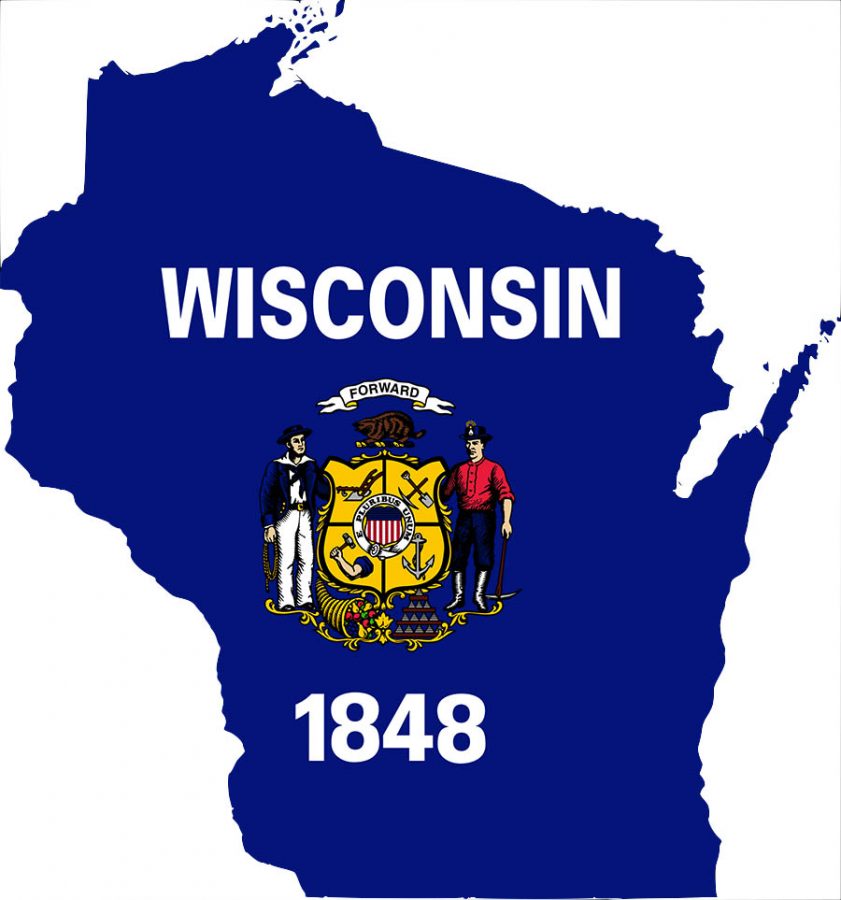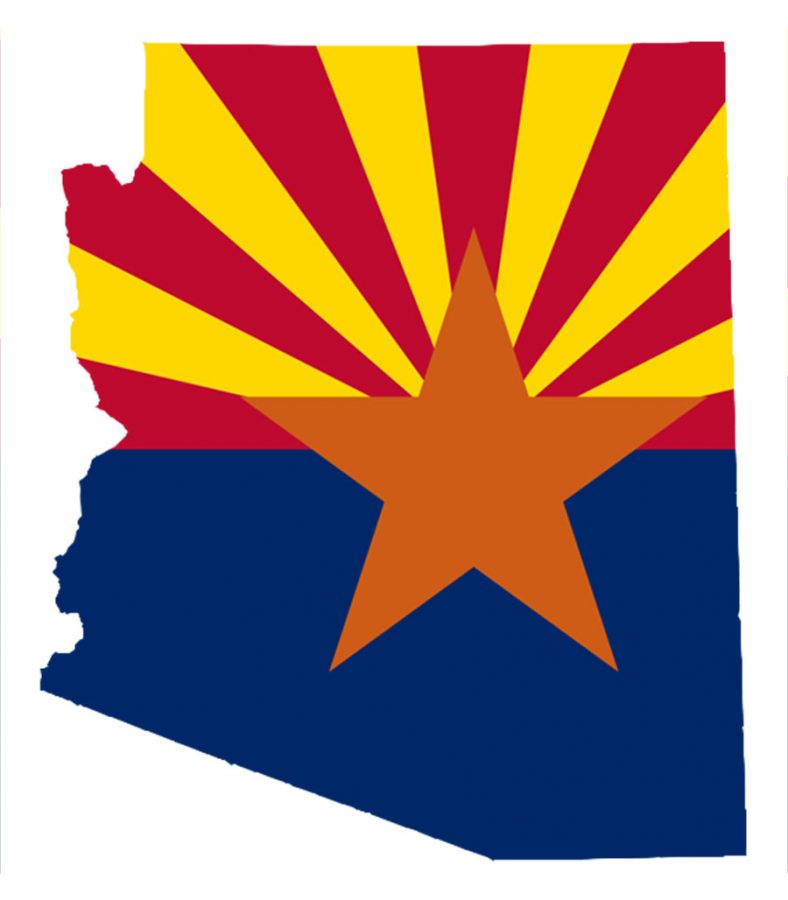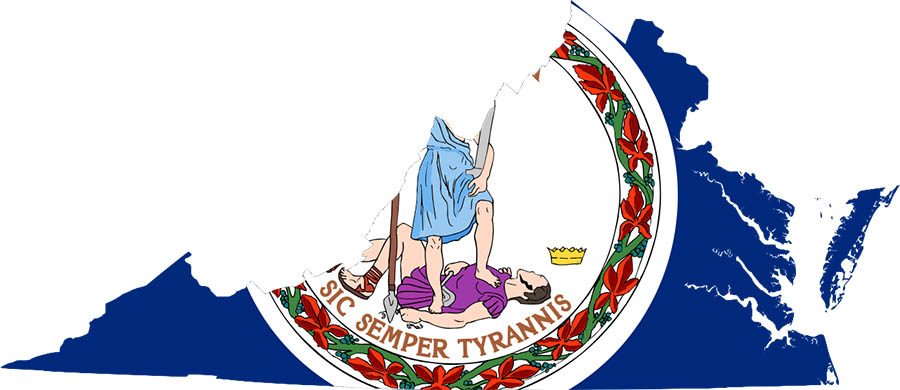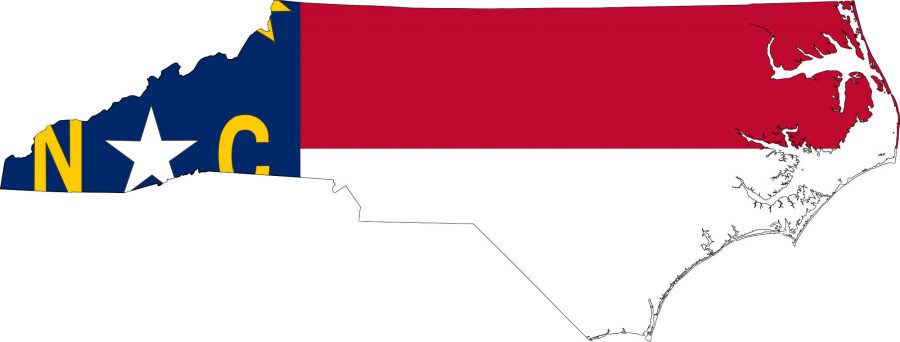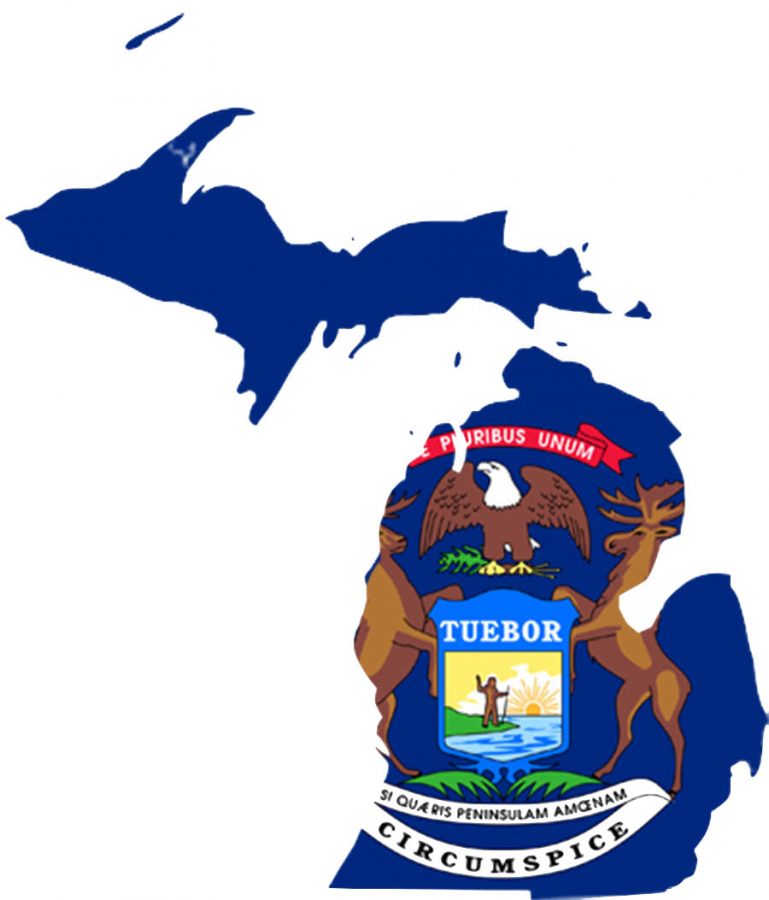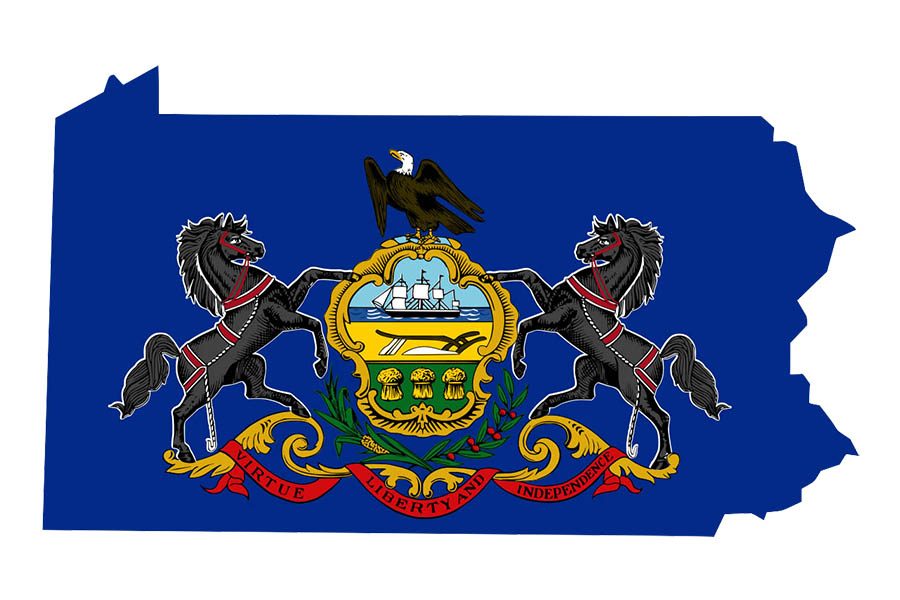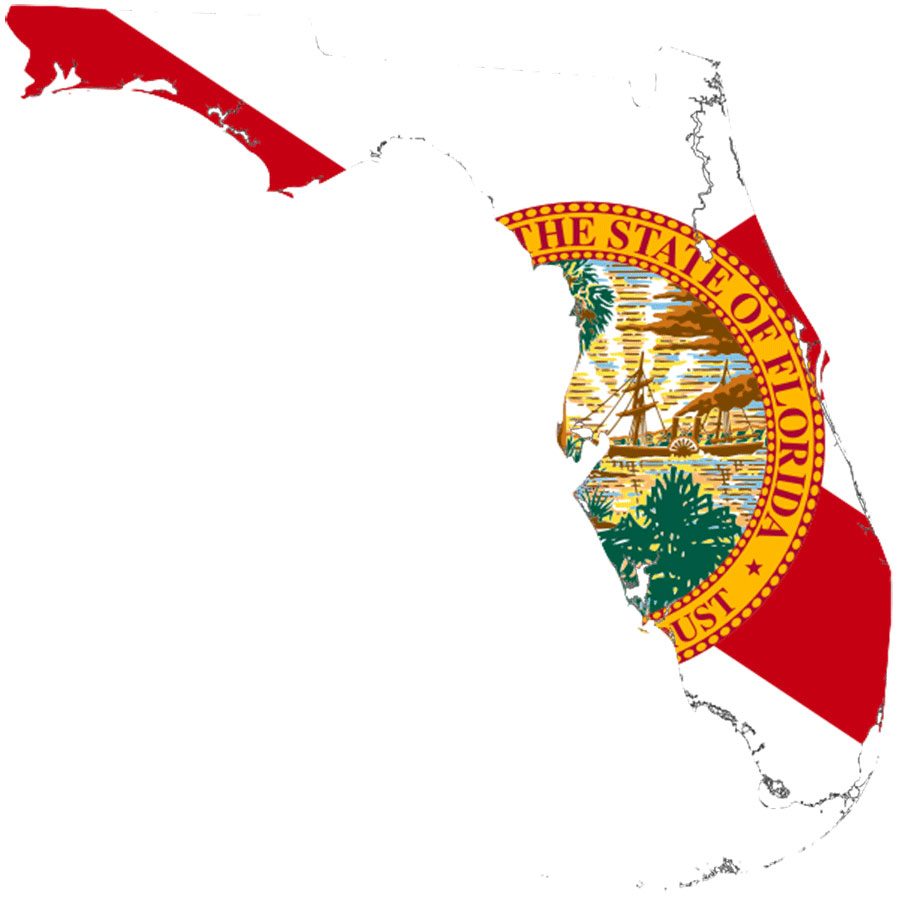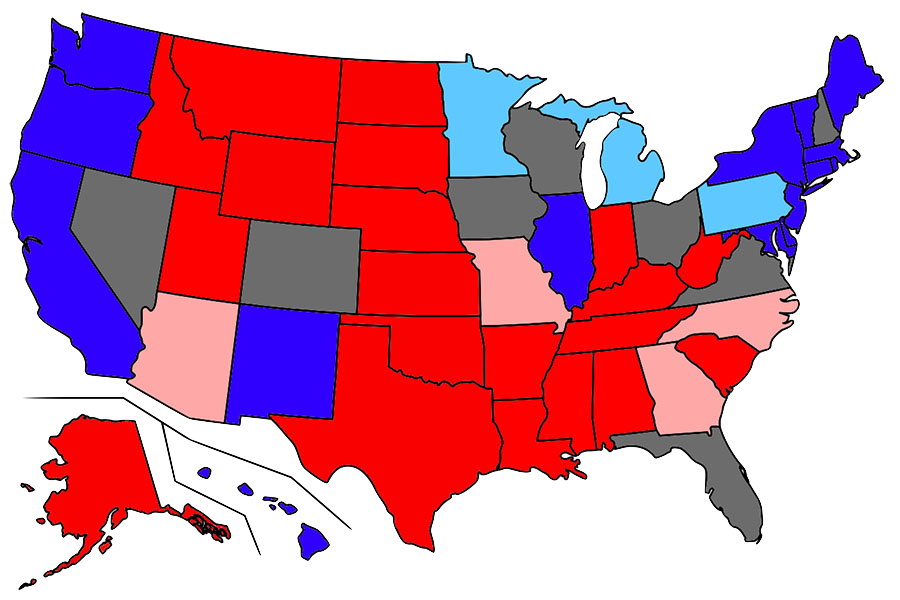Blue: Safe Democratic; Light Blue: Lean Democratic; Red: Safe Republican; Pink: Lean Republican; Gray: Tossup
Politicorner: Swing states
Swing states: constantly discussed during election seasons, and vital to any candidate’s success. But what are these so-called swing states? Why are they important?
The term “swing state” refers to states that aren’t reliably Democratic or Republican during an election. Ten states have had swing state status for a few elections, such as New Hampshire, Pennsylvania, Virginia, North Carolina, Florida, Ohio, Iowa, Wisconsin, Colorado, and Nevada. In 2016, several polls suggest more states have the potential to swing, including Arizona and Michigan (Georgia, Missouri, Minnesota, and even Utah have also qualified as potential tossups, but for this article, we’ll stick with the twelve listed here).
Hillary Clinton and Donald Trump have already started campaigning in these states, but no one knows for sure who will win them until polls close in November. Many of these races will be close. While we can’t precisely predict the winner of each state, we can analyze characteristics of each and draw our own conclusions.
A map of how states have voted since 1960. Infographic by Curtis Newton.
